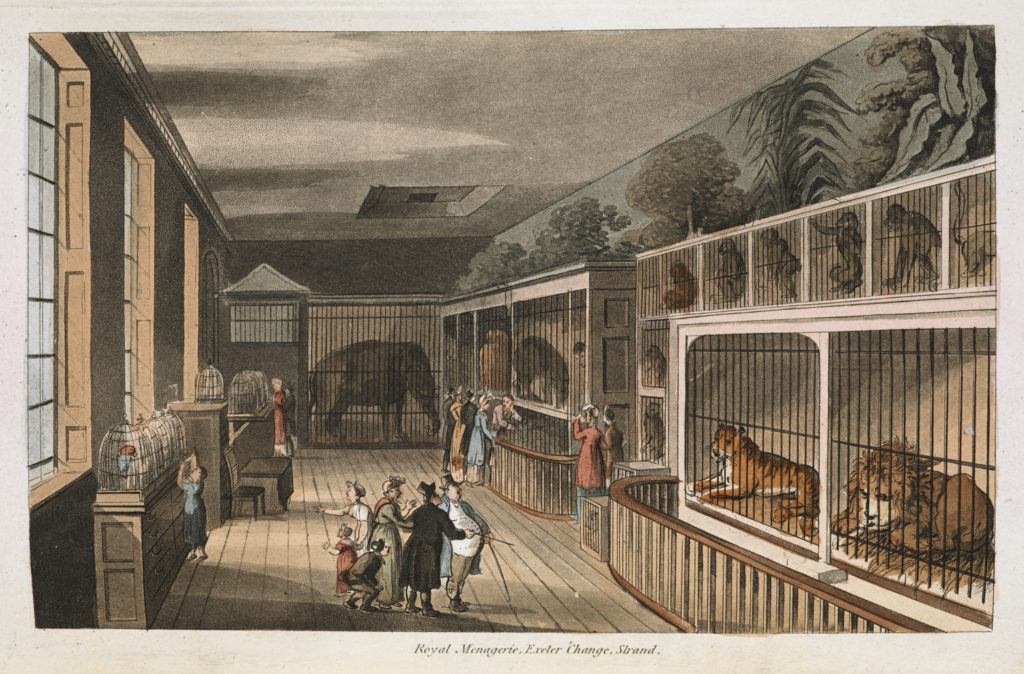Regency Reader Question
What animals were on display at the Tower of London in 1815? How much did it cost to go see them? Was this considered a genteel activity or only something for the lower classes?
| Source of Question | Reg Rom Book |
| Additional comments |
Thanks for the question, Susan M!
I did a post about the Tower of London animals here for more history, including the passage below which is from a book published by the Tower in 1817. Another scholar, who I link to, Rachel Knowles, was unable to find a detailed listing of animals past 1813.
An Improved History and description of the Tower of London, etc(1817)
The above was probably the closest reference I could find to a list of animals in the Tower circa 1815. I did an extensive search through all the databases online that I know of. Perhaps, somewhere in the British Library, there is buried a tome, but the most relevant I found in their catalogue was the 1817 book.

The painting by Thomas Rowlandson was published in 1816, so it also gives us a snapshot of the animals on display which, pictured, included lions, elephant, monkeys, tiger, jaguar, and exotic birds. I got this image here:https://www.bl.uk/collection-items/royal-menagerie-exeter-change which has some additional information.
Therefore, the most educated guess we can make about the animals in the Royal Menagerie in the Tower of London in 1815 is:
- Lions
- Tigers
- Panthers
- Wolves
- Leopards
- Bears
- Tiger Cats
- Baboons
- Muscovy cats
- Jackalls
- Racoons
- Eagles
- Elephants
- Exotic Birds
There was a satire cartoon printed in 1812 that also showed a cow, donkey and fox, although I am not sure how accurate the depiction is (below).
Update: I realised sometime later that I neglected to fully answer the question, so I am updating to rectify that. Most of the historical information I found cite the entrance fee as 1 shilling throughout the Regency era. Using the National Archives currency converter, (1810 to 2017) that would roughly be worth about 2 gbp, 33 pence.
Its likely that most customers were middle to upper class. The entrance fee was small enough that a working class family could pinch pennies to go for a special occasion, but generally the average working class income was scarcely enough for rent and food (https://www.bl.uk/victorian-britain/articles/the-working-classes-and-the-poor).
As the past post indicates, the Royal Menagerie was an exotic entertainment with a scientific like bent that also may have been inaccessible to working families who preferred to spend their extra shillings on social gatherings like fairs, dances, etc.
Most of the depictions I have seen of the Royal Menagerie show a middle to upper class clientle, usually with children in tow, giving us a glimpse that it was in many cases the precursor to the Zoo.
The Royal Menagerie was rivaled by the Exeter ‘Change and private aristocratic collections of exotic animals that began to be popular starting in the 17th century. Here is a brief article describing the exotic animal menageries of the 18th century: https://www.theguardian.com/books/2015/aug/20/georgian-menagerie-christopher-plumb-review
In any case, I hope this information is helpful to you, Susan M. Thanks for being a Regency Reader.
Ask us more of your Regency era questions here.










